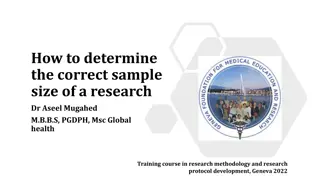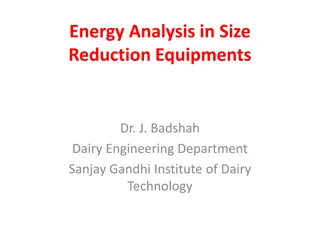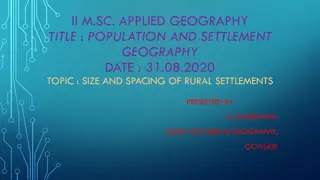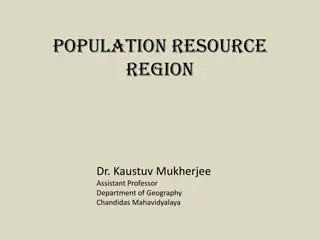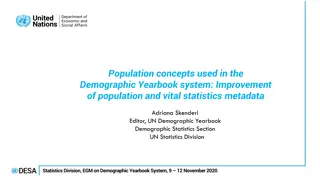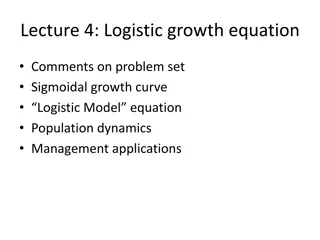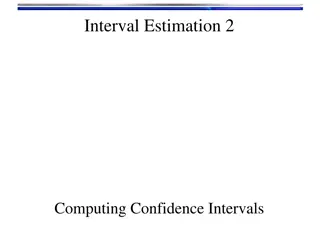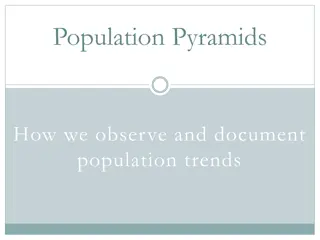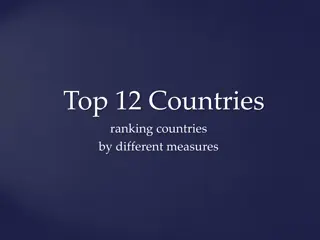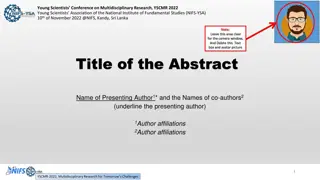How do scientists estimate the size of a population?
Scientists estimate population size using methods like direct counting, distance counting, camera traps, and mark and recapture. Random sampling is also discussed, along with its challenges and implications for accuracy.
Download Presentation

Please find below an Image/Link to download the presentation.
The content on the website is provided AS IS for your information and personal use only. It may not be sold, licensed, or shared on other websites without obtaining consent from the author.If you encounter any issues during the download, it is possible that the publisher has removed the file from their server.
You are allowed to download the files provided on this website for personal or commercial use, subject to the condition that they are used lawfully. All files are the property of their respective owners.
The content on the website is provided AS IS for your information and personal use only. It may not be sold, licensed, or shared on other websites without obtaining consent from the author.
E N D
Presentation Transcript
How do scientists estimate the size of a population?
Which population would be easier to estimate? Discuss with a partner, then answer for your warm up.
Methods to estimate population size Direct counting Distance counting Camera Traps Mark and Recapture
In your Table of Contents Date Title Page Symbol 8/29 Mark-Recapture Lab 7 8/29 Lab Reflections 8
Mark - Recapture Lab: Determining the size of a population
Reflection: Mark and recapture lab (p.8) Draw what you did in today s lab so that an adult could understand it. Color and label as needed. Have an adult at home sign your drawing.
Extension: Random Sampling Technique A technique called sampling can be used to estimate population size. In this procedure, the organisms in a few small areas are counted and projected to the entire area. For instance, if a biologist counts 10 squirrels living in a 200-square foot area, she could predict that there are 100 squirrels living in a 2000 square foot area. This is a simple ratio. 2. A biologist collected 50 liters of pond water and counted 10 mosquito larvae. How many larvae would you estimate to be in that pond if the total volume of water in the pond was 80,000 liters? Show work. 3. What are some problems with this technique? What could affect its accuracy?


